Adenomera hylaedactyla
—
Forest Chirping Frog
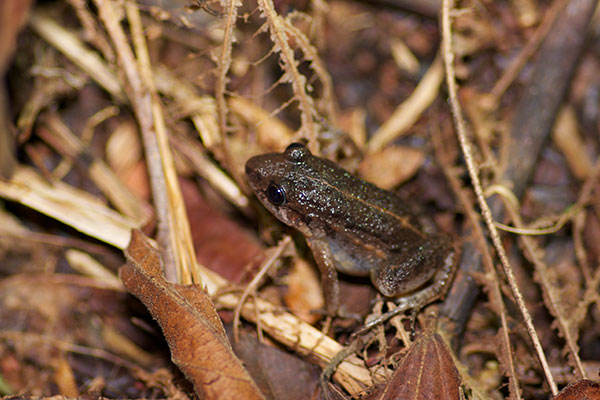
I think this is Adenomera hylaedactyla, though this species is hard to distinguish from Adenomera andreae, which also lives in this area. One difference is the length of the snout compared to the width of the eye (shorter snout in A. andreae); another difference is the typical habitat (open areas for A. andreae, forests for A. hylaedactyla); a third difference is the sound of the male's call. I didn't hear the call, and this one was at the edge of a thin trail through the forest, so not much help there. But the snout looks long-ish to me, so I'm calling it A. hylaedactyla until I hear otherwise.
Here is a complete list of the herps I saw in the wild on my 2014 MT Amazon Expeditions trip.
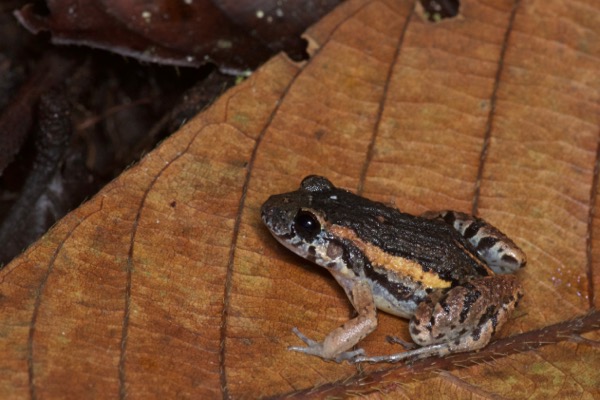
This one was deep into the primary forest at Madre Selva, so it seems safe to assume that it is A. hylaedactyla rather than A. andreae. I also heard thirdhand that the orange stripe is a known feature of some individuals of A. hylaedactyla.
My Travelogues and Trip Lists page includes a complete list of the herps I saw in the wild on my 2016 MT Amazon Expeditions trip.
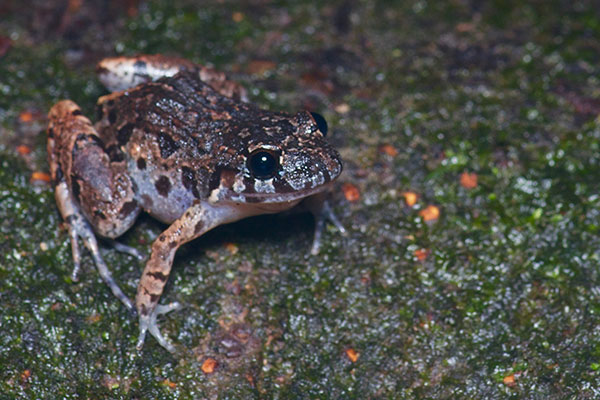
This one was also in primary forest, so I'm assuming it's A. hylaedactyla.
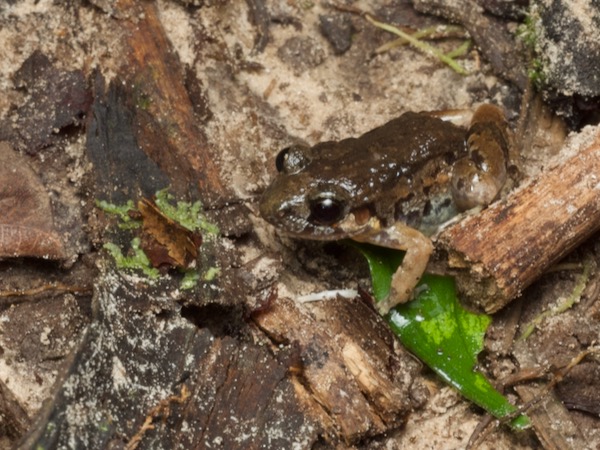
This year I gave up on trying to distinguish Adenomera hylaedactyla from Adenomera andreae and I've put all my Adenomera on this page. They were all in primary forest, not near any ponds, so it seems like a reasonable guess.
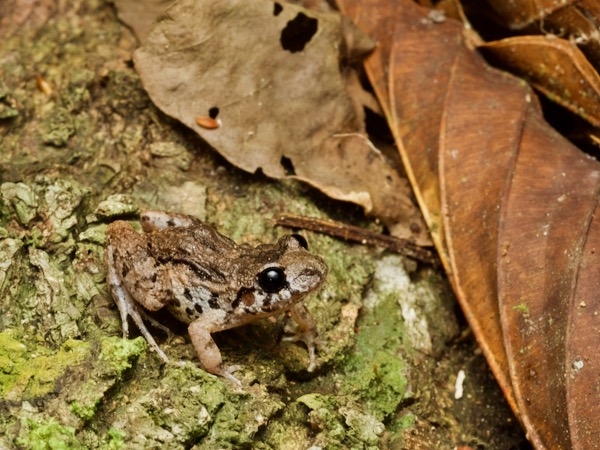
This one had the best patterning, though it's still not a particularly beautiful frog.
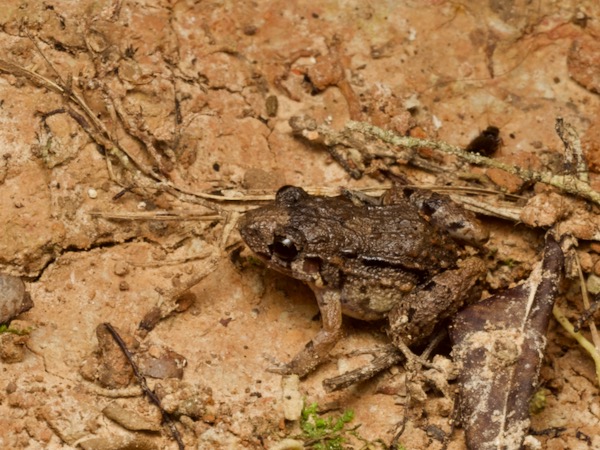
This one looks like it has had no trouble finding tasty bugs. Or maybe it's a gravid female?
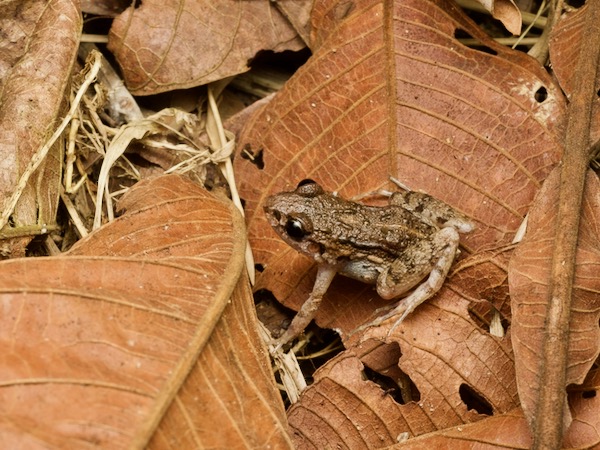
I appreciate this frog's willingness to find some interesting leaf textures on top of which to pose. Thanks, little frog!
Online references:
- Adenomera hylaedactyla account on AmphibiaWeb
- Adenomera hylaedactyla account on Amphibian Species of the World
Printed references:
- Bartlett, R.D., and Bartlett, P. 2003. Reptiles and Amphibians of the Amazon: An Ecotourist's Guide
- Duellman, W.E. 2005. Cusco Amazónico: The Lives of Amphibians and Reptiles in an Amazonian Rainforest